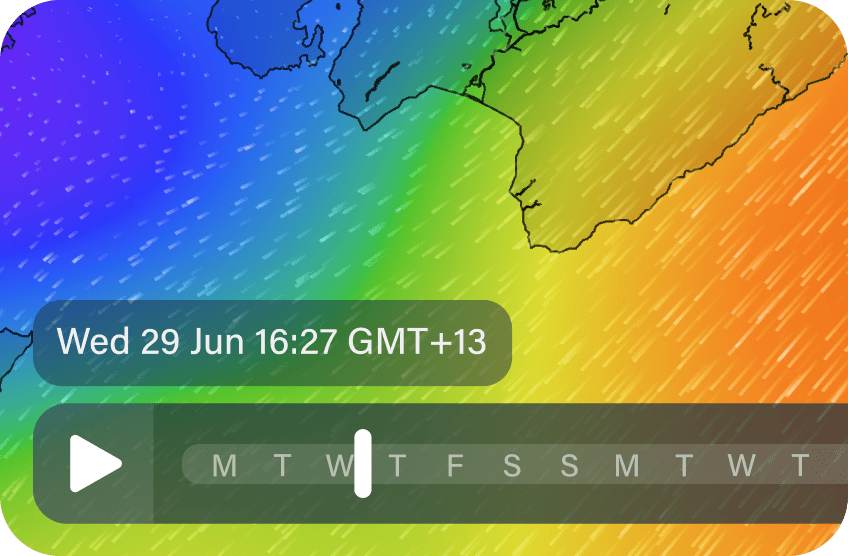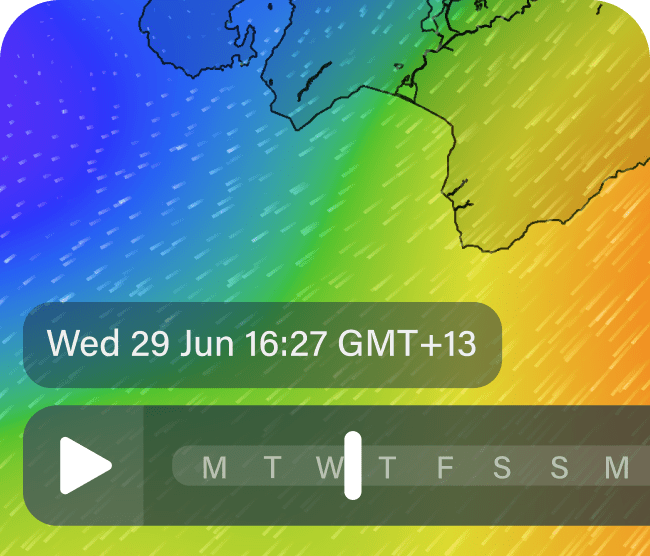Global Models
- #1 for accuracy & global resolution 9km
- #1 for land-based forecasts
Regional Models
- #1 Coastal resolution of 1km
- #1 Accuracy out to 36 hrs
Outstanding accuracy
Our exclusive PWE & PWG forecasts are generated with proven technology and the highest resolution on the web.
Read about who uses our models to get an insight from the experts.


Powerful marine tools
In addition to forecasts, we offer the most powerful marine tools on the market to make your time on the water simpler, safer and more efficient.

Weather Alerts
Get notified when conditions are perfect

Departure Planning
Let us find you the best date to depart

Live Weather
Over 20,000 live observations

Weather Routing
Optimal routes every time
The world’s best global models
We offer the leading global models so you can have complete confidence in the forecast.
- Resolution: 9km
- Range: 10 Days
- Time step: 1 Hour
- Update frequency: 12 Hourly
- Resolution: 12km
- Range: 10 Days
- Time step: 1 Hour
- Update frequency: 12 Hourly
- Resolution: 15km
- Range: 7 Days
- Time step: 1 Hour
- Update frequency: 12 Hourly
- Resolution: 25km
- Range: 10 Days
- Time step: 1 Hour
- Update frequency: 12 Hourly
- Resolution: 8km
- Range: 7 Days
- Time step: 1 Hour
- Update frequency: 12 Hourly
- Resolution: 8km
- Range: 7 Days
- Time step: 1 Hour
- Update frequency: 12 Hourly
High-resolution regional models
Our regional models provide short range, high resolution forecasts for selected regions around the world. Find out what resolutions are available in your area by viewing our Global Coverage
- Resolution: 1km
- Range: 1.5 Days
- Time step: 1 Hour
- Update frequency: 12 Hourly
- Resolution: 1km
- Range: 1.5 Days
- Time step: 1 Hour
- Update frequency: 12 Hourly
- Resolution: 2km
- Range: 5 days
- Time step: Hourly for days 1 & 2, then 3 hourly
- Update frequency: Hourly for 0-12h , 6 hourly for 13-48h, 12 hourly for 48h+
- Resolution: 3km
- Range: 18 hours
- Time step: 1 Hour
- Update frequency: Hourly
- Resolution: 1.25km
- Range: 42 Hours
- Time step: 1 Hour
- Update frequency: 00z, 03z, 06z, 12z, 18z
- Resolution: 5km
- Range: 84 Hours
- Time step: 1 Hour
- Update frequency: 6 Hourly

Wave Models
The PredictWind wind forecasts, PWG and PWE, are used to drive the WaveWatch III wave model which produces an accurate 50km resolution wave forecast.
The WAM model from ECMWF is run at an incredible 14 km resolution globally, and is currently rated the best wave model from any national weather centre.

Hour by hour forecasts
Most marine forecasts give you a generalised forecast in the morning or the afternoon. We show wind and weather updates every hour, with accurate, highly detailed weather maps for your entire local area.

Hour by hour forecasts
Most marine forecasts give you a generalised forecast in the morning or the afternoon. We show wind and weather updates every hour, with accurate, highly detailed weather maps for your entire local area.
Our Process


Model Physics
PredictWind uses the open source Conformal Cubic Atmospheric Model (CCAM) to generate PWG/PWE weather forecasts based on different initial conditions and domains that are

